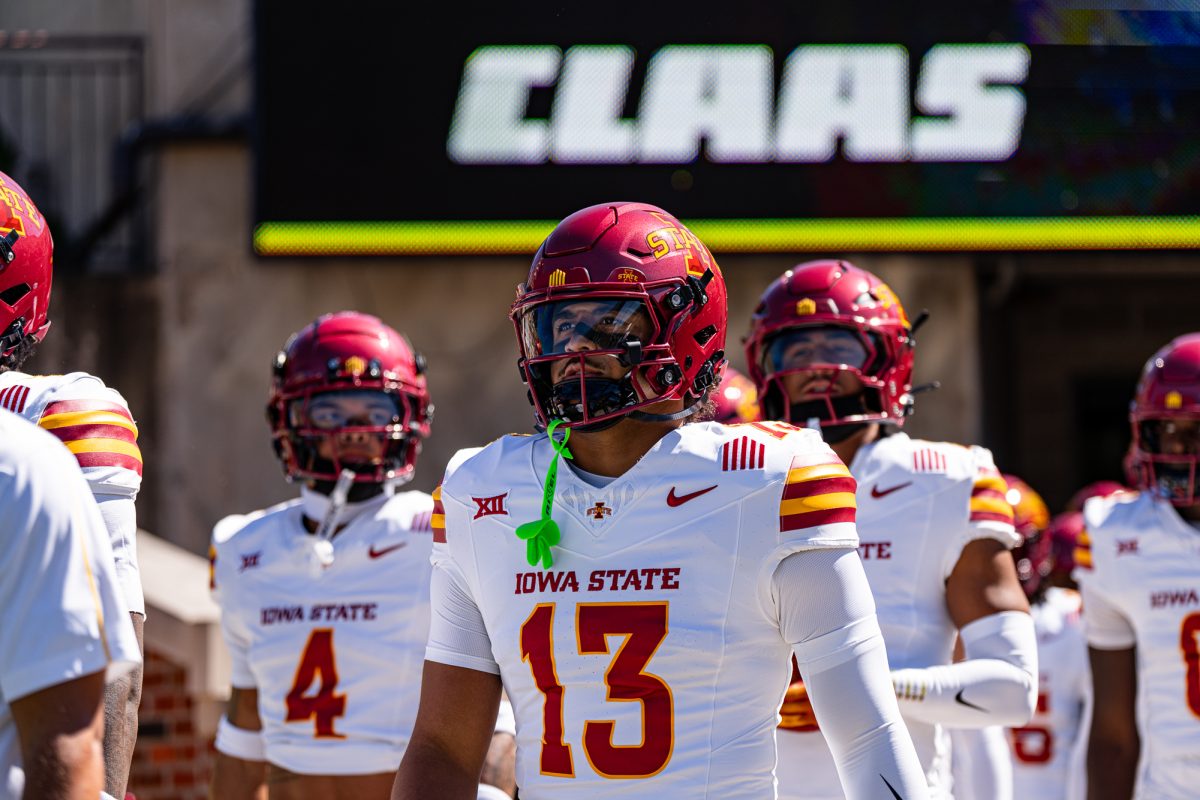WWII bomber shares experience of history
April 14, 1999
Retired Air Force Lt. Col. Fred Olivi was an eyewitness to history, as a crew member on the B-29 bomber that dropped the atomic bomb on Nagasaki during World War II.
He relayed his experience to almost 350 people Tuesday in the Benton Auditorium of the Scheman Building, as part of a class for Iowa State’s “College for Seniors.”
Olivi said he was aware when he was selected for the 509th division of the U.S. Air Force that the United States had a bomb capable of mass destruction.
“To a 23-year-old lieutenant who just got his wings a short time before, in August 1944, and being told that we had a bomb that could destroy an entire city was mindboggling, to say the least,” he said.
Olivi said his crew of 13 took off at 3:45 a.m. Aug. 9, 1945 and was accompanied by two other airplanes, one carrying the instrumentation for the bomb and a photographic plane.
After experiencing a 45-minute delay when the photographic plane didn’t report at the rendez-vous point and struggling with limited visibility due to weather conditions at their first aiming point, Olivi said, the crew found out the plane also had mechanical problems.
“We took off with a malfunctioning booster pump,” he said. “This sort of surprised me.”
Without the booster pump, the plane could not use its 600 gallons of reserve gas, Olivi said. Now, the crew had to fly to Nagasaki with only enough gas for one bomb run and fly into Okinawa with their emergency landing gear.
The crew arrived over Nagasaki to find weather conditions similar to what they had encountered at the first aiming point.
“The cloud cover was even worse, about eight-tenths to nine-tenths almost,” Olivi said.
Despite orders to drop the bomb “visually only,” because of the limited gas supply the crew decided to drop the bomb by radar.
Olivi said the navigator and the radar operator were “95 to 98 percent complete” with the radar bomb run when the clouds broke.
“The captain said, ‘I see it! I see it! I got it!,’ … and he had 45 seconds to set up the bombsight and drop the bomb,” he said.
Olivi said they were off the aiming point by three miles, but the mission still was successful.
“The bomb landed over the industrial part of town that was making all the war material for the Japanese,” he said.
After dropping the bomb, Olivi remembers looking out the window at the explosion.
“We were in bright sunlight at the time,” Olivi said. “When the bomb exploded, it was a white-bluish light that flooded the aircraft completely.”
After the bomb exploded, the aircraft experienced three shock blasts that shook the plane violently.
“That scared the hell out of us because there was nothing we could do about it but look at each other and hope there would be no structural damage to the aircraft,” Olivi said.
Olivi said the whole time he was flying the mission he was not very scared.
“We didn’t have time to be; we were too busy at the time,” he said.
He also said he hopes younger people will remember the sacrifices that were made in the past.
“I want people to know that somebody had to die for the style of living we have today,” Olivi said.






